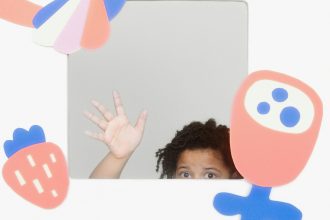Effective Client Engagement Strategies for a Budding Web Development Agency
Starting a new web development agency can be an exciting yet challenging venture. One of the significant obstacles in this journey is often acquiring clients, a hurdle many new businesses encounter. While there is an abundance of resources on innovative lead generation strategies and the latest marketing software, I’d like to shift the focus towards refining our current client engagement tactics.
A key element of our approach involves offering potential clients a complimentary design upfront. This gesture aims to build a strong initial rapport and foster a professional relationship. Importantly, there are no obligations for the client; they are free to decide whether to purchase the final product based on this preliminary design.
Once the design is completed, it’s accompanied by a tailored quote, typically ranging from $500 to $1,000 AUD for a standard five-page website. This practice is intended to provide complete transparency and create an easy pathway from initial interest to a finalized business relationship.
As I consider the potential points of friction from a small business owner’s perspective, several questions arise: If you were on the receiving end of this offer, what aspects of the process might deter you from engaging further? Would you prefer to discuss pricing before or after seeing the design? Additionally, are there elements you’d like to see augmented, reduced, or approached differently to enhance your experience?
Your feedback would be invaluable in fine-tuning our strategy and ensuring that our services align more closely with client expectations and needs. Thank you in advance for sharing your insights!










2 Comments
This post raises some crucial points about client engagement strategies, particularly for new web development agencies. Offering a complimentary design is an excellent way to demonstrate your skill and create a positive first impression. However, it might also help to consider framing this offer in a way that emphasizes the value clients receive beyond just the design.
One suggestion could be to incorporate a brief consultation as part of the initial offer. This could involve discussing the client’s goals, desired aesthetics, and any specific functionality they are interested in. By doing this, you not only foster a more personalized connection but also collect valuable information that can enhance the design process.
Moreover, addressing the concerns around pricing is vital. It might be beneficial to be upfront about your pricing structure early in the conversation, even if it’s just a ballpark figure. This transparency can reduce anxiety for potential clients who might worry about hidden costs.
Finally, inviting clients to provide feedback during the design phase can also be a game-changer. It reinforces a collaborative atmosphere, making clients feel more invested in the outcome, which may increase their likelihood of converting into paying customers.
Overall, the key lies in building trust and maintaining open communication throughout the process. This will not only strengthen client relationships but also potentially lead to referrals and repeat business in the future. What do others think about integrating preliminary consultations and ongoing feedback into the engagement process?
This is a thoughtful approach that balances transparency and relationship-building—two critical components in client engagement. Offering a free initial design not only demonstrates confidence in your skills but also allows clients to envision the end product, reducing uncertainty. However, from a client perspective, clarity around the scope of the free design is essential; specifying what’s included and what might incur additional costs can help manage expectations upfront.
Regarding the question of when to discuss pricing, many clients appreciate seeing the design first, as it helps them understand value before committing financially. Providing a clear, upfront quote after the initial design fosters trust and avoids potential “sticker shock” later on. Alternatively, some clients might prefer to have a ballpark figure before investing time in the design, especially if their budget is a strict constraint.
To further enhance the process, consider implementing a brief consultation before starting the design, where clients can articulate their needs and budget. Also, including testimonials or case studies could reinforce credibility and reassure potential clients of your professionalism.
Overall, your willingness to adapt based on client feedback is commendable, and refining your process with these points in mind could significantly boost client confidence and conversion rates. Looking forward to seeing how this evolves!